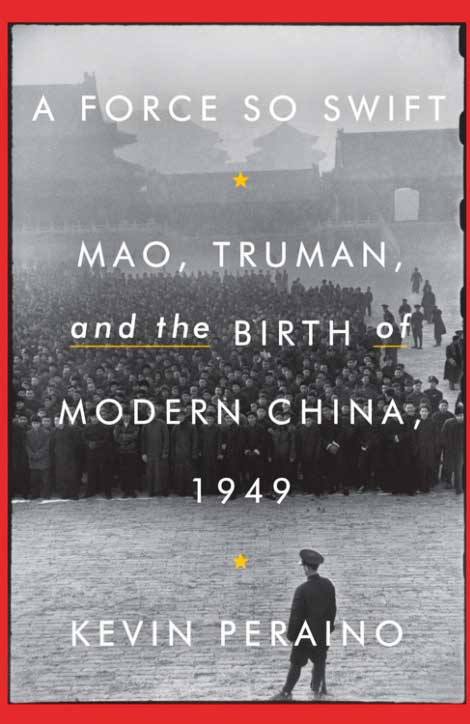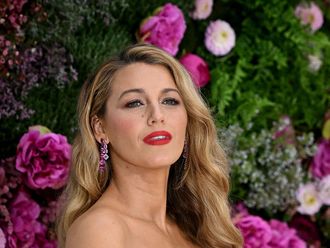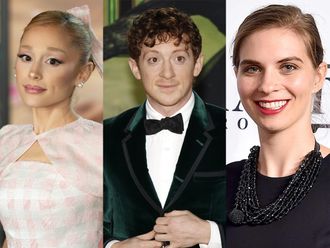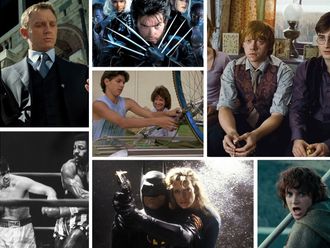By Kevin Peraino, Crown, 379 pages, $28
Kevin Peraino’s absorbing book covers that tipping-point year, 1949, when Mao Zedong’s Chinese Communist Party came to power and things not only changed radically within China, but also for Chinese-American relations. After several decades of close ties to Chiang Kai-shek’s Nationalists, including a wartime alliance, the United States plunged first into cold war with China and then hot war (in Korea), followed by several decades of almost complete diplomatic separation.
“A Force So Swift” chronicles these epic changes through the eyes of a star-studded cast that includes President Harry Truman, the diplomat George Kennan, United States Representative Walter Judd, Gen. Douglas MacArthur, Generalissimo Chiang Kai-shek, Madame Chiang Kai-shek, Mao Zedong and Joseph Stalin, with the United States secretary of state, Dean Acheson - whose foppish handlebar mustache was described as “a triumph of policy planning” by the New York Times columnist James Reston - playing the dramatic lead. Instead of putting readers “present at the creation” of the postwar global architecture in Europe, Peraino’s narrative puts them present at the genesis of that storm system of ambiguities and contradictions that came to grip Asia once Mao defeated Chiang. “I arrived just in time to have him collapse on me,” Acheson lamented. This so-called loss of China has echoed down through the decades so that today the United States still finds itself groping for how best to deal with an even more consequential China.
Despite growing pressure in 1949 to respond militarily, Acheson steadfastly refused. In Europe the Marshall Plan and NATO arrayed the United States resolutely against the Soviet Union and on the side of democracy. But in Asia, Acheson argued, “preponderant power has now clearly passed to the Communists.” He refused to heed the pleas of Walter Judd, a Republican congressman from Minnesota and a former missionary in China. Judd insisted that because “the great events of the next thousand years” would play out in Asia, the United States should stand up to Mao just as it had stood up to Stalin in Europe. “I have never been able to understand, why we cannot get a policy that makes sense in both oceans at the same time,” he complained, especially when those Chinese “who believe in genuine freedom” are confronting “disaster.”
Acheson fancied himself a pragmatist who, like his director of policy planning, George Kennan, viewed Mao’s victory as the result of “tremendous, deep-flowing indigenous forces which are beyond our power to control.” Because of wanton corruption, Chiang’s “house appeared to be falling down,” leading Acheson to call for “strategic restraint,” and for building “a great crescent” of containment around China so, as Senator Arthur Vandenberg put it, Washington could adopt “sort of a wait, look, see policy.”
But with China falling under Communist rule, Acheson worried that Truman’s Wilsonian idealism might propel him toward a more activist opposition to the “false philosophy” of Communism. Indeed, even though Kennan proclaimed that the United States was “not yet really ready to lead the world to salvation,” China’s Marxist-Leninist, one-party system had values so antithetical to America’s that certain agencies in Washington had begun covert operations against Mao anyway. The United States soon found itself pursuing a hedging strategy that claimed neither to embrace nor to confront Chinese Communism, but nonetheless excited Mao’s paranoia. Moreover, Truman and Acheson were being goaded by the likes of Judd and the glamorous and well-connected Madame Chiang Kai-shek, who was then living in the United States, and who lobbied relentlessly to counter the notion that active American support for Chiang’s Nationalist cause was, in Truman’s disparaging words, like pouring “sand in a rat hole.”
Being a devout Christian and a believer in freedom of the individual, Madame Chiang was appalled when Acheson came out with a China White Paper that he himself described as a “giant firecracker.” It declared that “Nationalist armies did not have to be defeated; they disintegrated” and that “the unfortunate but inescapable fact is that the ominous result of the civil war in China was beyond the control of the government of the United States.” A New York Times article on the White Paper carried the headline: “U.S. Puts Sole Blame on Chiang Regime.”
For Madame Chiang, Acheson’s stand was an American betrayal not only of a loyal ally, but also of its own vaunted principles of freedom and democracy. She fled her Riverdale estate for Taiwan in pique, denouncing the kinds of “moral weaklings” whom she saw as selling out a “free China.” Others in the “China lobby” like Douglas MacArthur would keep up the drum beat against Acheson by decrying those “who advocate appeasement and defeatism in the Pacific.”
The year 1949 opened many fault lines. One within America was between those who supported passive containment of Chinese Communism and those who sought active rollback. That division laid the foundation for the contradiction between engagers and confronters that still persists today. In fact, the last words of Peraino’s book read like an epitaph: “In their way, the quarrels of 1949 endure.”
Indeed, as President Xi Jinping has more recently tightened state controls over important aspects of life, despite all the hopes about the tonic effects of “engagement,” the path of China is now farther away from liberal democratic norms or a convergence with American interests than during the beginning of the reform era four decades ago. Then, many party leaders openly aspired to see China evolve in a more constitutional, law-based direction. But instead of being led by an elite trained abroad (and not just in engineering, business administration and the sciences), allowing them to feel comfortable on both sides of the East-West divide, ranking Chinese leaders today remain so encumbered by the party’s official historical narrative of humiliation, victimization and “hostile foreign forces,” and so pumped up on nationalism, that even close personal friendships with American counterparts are grounds for suspicion.
Even though almost seven decades have elapsed since 1949, the enduring gap between the two countries’ political systems and values continues to widen and incubate worrisome levels of suspicion. Without being able to interact with the openness and ease of their Nationalist forerunners, current Chinese officials charged with bridging the still wide East-West gap are deprived of an essential building block. (For example, I am not aware of a single ranking party official or military officer in China who has a foreign spouse.) What is more, the party now squeezes out as untrustworthy those Chinese whom it fears to have been overly influenced by the West, and even seeks to ostracize those foreign voices with which it disagrees. As a result, a whole set of muscles essential for any two societies to interact in a fulsome and healthy manner is going missing.
While the United States and China enjoy growing volumes of trade, investment and travel, an increasingly impermeable membrane is simultaneously now being interposed between decision makers that deprives the two countries of critical tools in being able to develop a more convergent future. Despite China’s remarkable economic “rejuvenation” and new wealth and power, there has been no commensurate restoration of that elusive quality possessed by Chiang’s Nationalist officials, and even his wife, that allowed them to be more comprehensively engaged with the outside world. The absence of this elusive cosmopolitanism constitutes a serious obstruction between the two countries, hindering their ability to reset the terms of the game and get along. And it’s hard to see any quick remedy.
Washington must once again decide, as Acheson asked in 1949, “what is possible, what is impossible, what are the consequences of some actions, what are the consequences of others?” The relationship, always a difficult one, once again begs reinvention. However, unlike the world of 1949, so dramatically described by Peraino in his timely book, our current globalized world renders separation not even thinkable.
–New York Times News Service
Orville Schell is the Arthur Ross director of the Asia Society’s Center on U.S.-China Relations and a longtime writer on Chinese history and policy.










